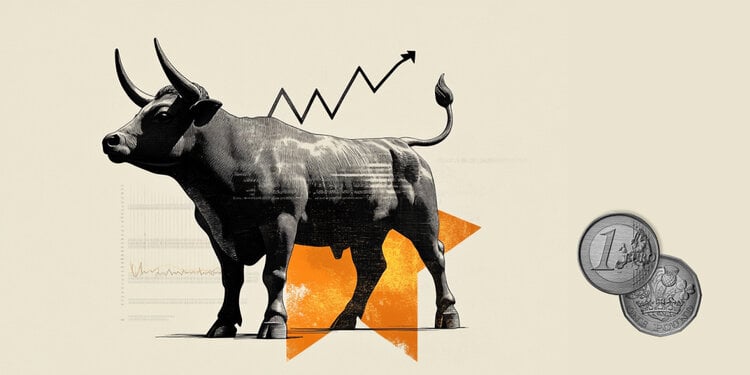Anonymous trader who owns an Ethereum wallet with an address jaredfromsubway.ethin one day became a star in the crypto community: thanks to the tactics of the so-called sandwich attack, in just a day he earned more than $4 million and single-handedly became one of the leaders in terms of network commissions, displacing the largest crypto services, writes RBC Crypto.
Attacks like this are not a new concept in decentralized finance (DeFi). The sandwich metaphor is used due to the fact that the trader’s tactics are based on the two-way use of information about someone else’s application for the purchase of a particular crypto asset. With the help of special bots, a trader tracks transfers in a pool of unconfirmed transactions on Ethereum or another blockchain.
When the bot finds a large order that will inevitably lead to an increase in the price of an asset, it buys this asset in advance at a lower rate, “pushing” its transaction at the expense of an increased commission, and after the order is executed and the price rises, it sells it at a profit. The process is automated and takes place in seconds.
Memes and commissions
The most attractive target for such attacks is usually transactions with low-liquid assets. This is exactly what PEPE has become, a new token named after the famous Pepe the frog meme. PEPE quickly gained popularity when a story spread in the community about how an early buyer of the token turned $250 into $1.8 million at a thousandfold increase in its price.
In search of quick profits, thousands of other traders began to buy PEPE, and in parallel, similar tokens named after famous memes — CHAD, WOJAK and others — began to be launched. Due to the low liquidity of tokens, any large order to buy pushed their prices up, and it was precisely such orders that the bots of traders who made money on sandwich attacks hunted for.
According to the analytical service EigenPhi, over the past week, PEPE and WOJAK have become the most popular assets on the Ethereum network after USDC and USDT stablecoins with transaction volumes of over $250M and $120M, respectively. The income from sandwich attacks of the owner of the jaredfromsubway.eth wallet amounted to about $1.6 million in pairs with PEPE and more than $2.8 million in transactions with WOJAK.
However, the implementation of this strategy in such volumes requires high costs to pay increased fees to “push” transactions. The owner of jaredfromsubway.eth spent about $1.3 million in just one day on the so-called gas in the Ethereum network. This is about 1.8% of the total network fees for the same period. At the moment, in terms of the size of commissions, the trader was only ahead of the Arbitrum network contract, in which there is a whole ecosystem of applications with millions of users.
Over the past two months, jaredfromsubway.eth has spent roughly $7 million in fees on over 180,000 transactions in an effort to make a profit that outperforms other users, according to community watchers.
Unethical tactics
Sandwich attacks are just one tactic within the larger phenomenon of Maximum Extractable Value (MEV). This is a technique, the essence of which is to manipulate the sequence of transactions in the blockchain for profit, for example, through arbitrage or outrunning other people’s transactions. Profits from MEVs typically go to block creators with transactions on the Ethereum network. It is they who determine the order of these transactions and only then pass it on to the validators. Ordinary users cannot influence their own transactions, and wallets and applications do not have the necessary tools to use MEV to their advantage.
The Ethereum blockchain takes about 12 seconds to validate one block with transactions. This time is enough for bots to scan each of the unconfirmed transactions in the block and get the opportunity to get ahead of the closing moment of someone else’s transaction. The process when a bot puts its own transaction in front of someone else’s (which will lead to an increase in the price of an asset) is called front running. Rearranging a transaction with an order to sell an asset at a higher price is called backscreening. The combination of both processes creates a sandwich attack.
Traditionally, such tactics are considered unethical, but not prohibited. The absence of a central DeFi oversight body plays into the hands of MEV traders. Most of their transactions take place on decentralized exchanges (like Uniswap), as was the case with the wallet owner jaredfromsubway.eth. In the same way that high-frequency trading market players lead in profits in traditional markets, crypto traders in the MEV segment use various tactics to generate billions of dollars in income in crypto assets.
Flashbots has been fighting for a fair market in the MEV field for many years, creating software and infrastructure to reduce manipulation in this area. On April 20, the developers unveiled a beta version of their MEV-Share protocol, which aims to distribute a portion of the profits from the maximum extractable value among Ethereum users. According to the developers, it will give users the ability to control their transactions, and it can be integrated into wallets to protect against bots trying to profit from front-running.
Source: Cryptocurrency
I am an experienced journalist and writer with a career in the news industry. My focus is on covering Top News stories for World Stock Market, where I provide comprehensive analysis and commentary on markets around the world. I have expertise in writing both long-form articles and shorter pieces that deliver timely, relevant updates to readers.







